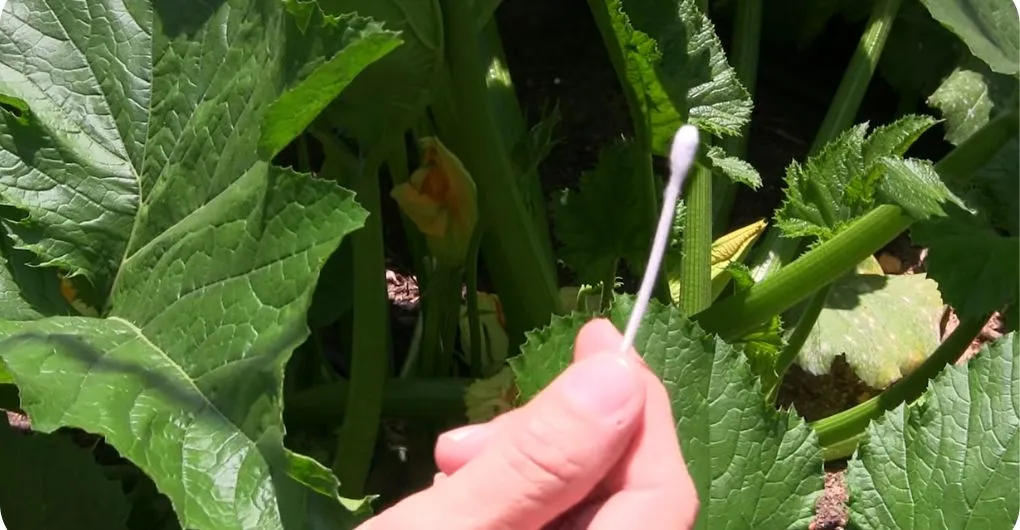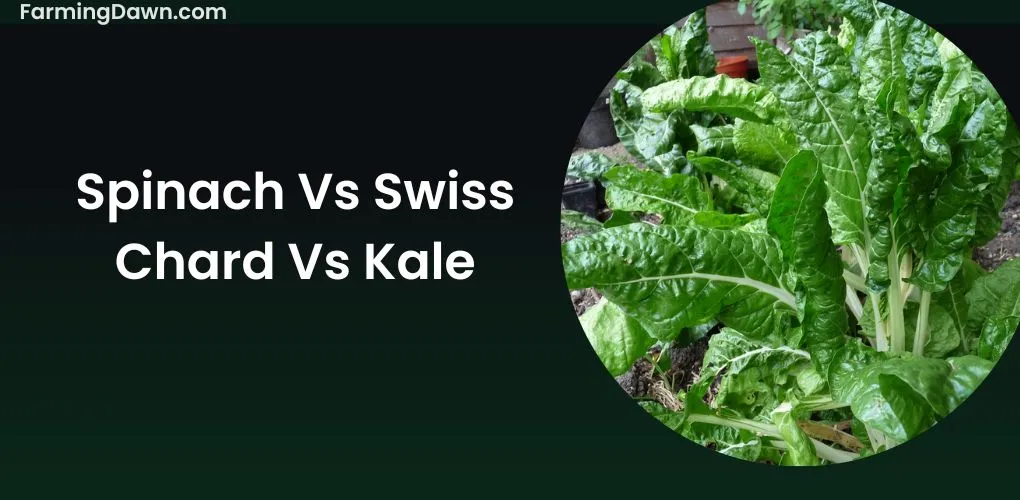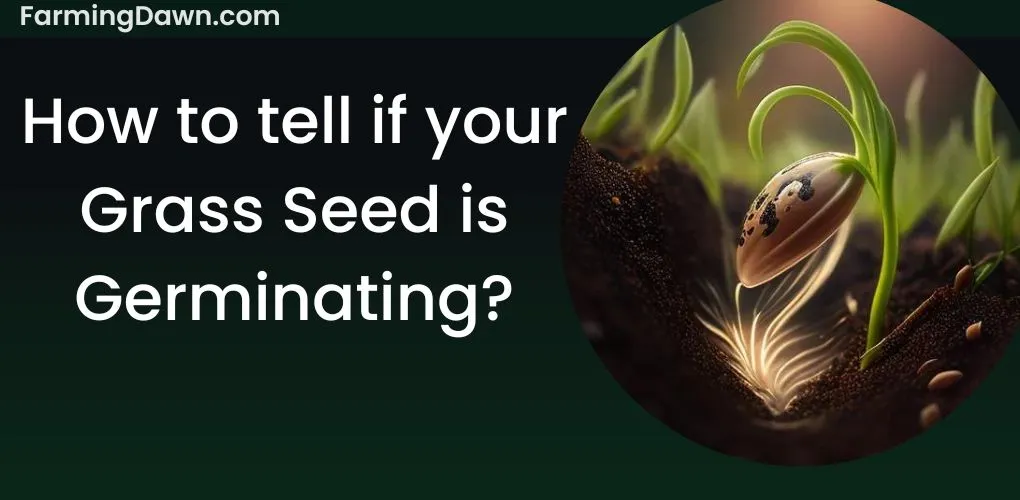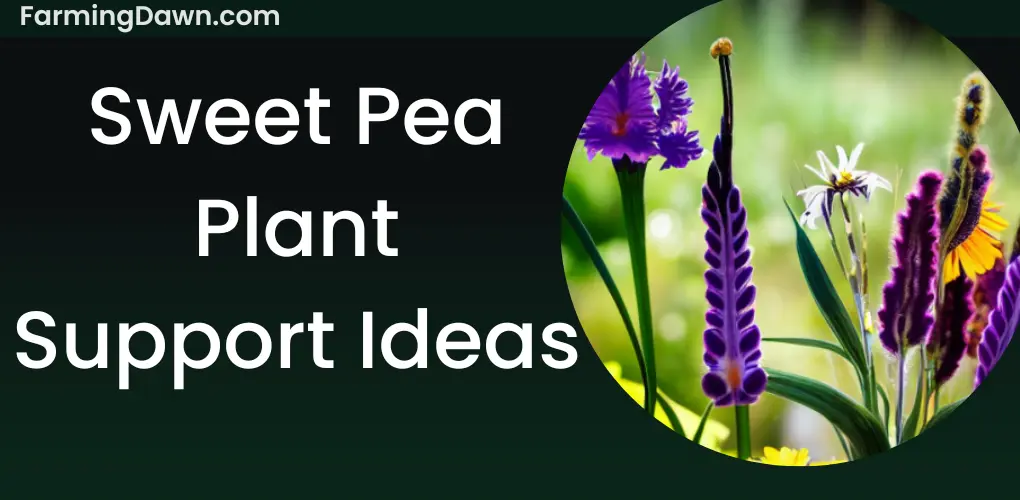How to tell if zucchini is pollinated can be a crucial step in determining the success of your crop and the quality of your fruits. Sadly, it’s not always simple to tell zucchini pollination just by looking at it.
However, I will share the tips and tricks that will make your job easier and help you determine if your plants are pollinated and what to do for successful zucchini pollination.
Male and Female Zucchini Flowers and their Role in Zucchini Pollination
This plant is divided into two parts:
- Male part
- Female Part
Zucchini Male Flowers
Usually, male zucchini blooms are bigger and more numerous than female flowers. They are also the first to appear on the plant and typically open before the female parts.
The production and release of pollen, essential for zucchini pollination, is the primary function of the male zucchini flowers. Insects can more easily access the pollen thanks to the long stem that protrudes from the base of the bloom.
Zucchini Female Flowers
Female zucchini flowers are often smaller and less numerous than male blooms. At the base of the flower, they feature a tiny, rounded ovary that, if pollinated, will eventually mature into a zucchini fruit.
Because they are more conspicuous on the plant than male flowers, female blooms are frequently more noticeable as they start to develop fruit.
Signs on How to Tell if Zucchini is Pollinated
An indication that a zucchini bloom has been successfully pollinated includes the following:
- Swollen Ovary
- Color Change
- Stem Thickening
- Fading of Petals
- Fruit Production

- Swollen Ovary
The ovary, or the female portion of the flower, will enlarge after pollination. This is an undeniable indication that the flower has gotten all the pollen required to fertilize the eggs. The ovary will eventually develop into a tiny fruit as it grows.
- Color Change
Pollinated flowers frequently turn from yellow to green. This is due to the hormone changes brought on by successful breeding. The color change also indicates that the plant focuses on growing fruit rather than producing more blooms.
- Stem Thickening
A thickening of the stem beneath the flower is another indication that propagation was effective. This results from the plant’s focus on developing the fruit and bearing its weight.
- Fading of Petals
Pollinated blooms eventually wilt and lose their petals when they begin to fade. This is a normal phase of the plant’s life cycle and indicates that the flower’s function has been fulfilled.
- Fruit Production
The formation of fruit is the most evident indication that zucchini pollination was successful. Depending on the weather and the plant’s condition, this could take a few days to a few weeks. Up to the point at which it can be picked, the fruit will continue to develop and grow.
Zucchini Pollination: How to Hand Pollinate Zucchini?
Tools required for zucchini pollination by hand are:
- Paintbrush
- Scissors
- Magnifying glass
How to Self Pollinate Zucchini?
- Identifying Male and Female Flowers
Identification of the male and female flowers on your zucchini plant is the first stage in hand pollination. Male flowers have a slender stem that grows on long stalks at the base of the blossom. Contrarily, female blossoms bear a little fruit near the base of the blossom.
- Pollen gathering
The next step is to collect the pollen from the male part. Morning is the ideal time to accomplish this because the blooms are completely open, and the pollen is most active.
The stamen, the parts of the male flower that produce pollen, can be seen by carefully removing the petal. To remove the petals, you can use scissors or shears. Gently rub the stamen between your fingers to collect the pollen.
- Changing the Pollen
It’s time to transfer the pollen to the female part after you’ve finished collecting it. Dab the pollen straight onto the pistil, the sticky stigma found in the center of the female flower, by using a paintbrush or gently lifting the female flower petals. For each female flower, you want to pollinate, repeat this procedure.
- Keeping an eye on the Fruit’s Growth
Keeping an eye on the fruit growth after hand-pollinating the female blooms is crucial. Every day or two, check the fruit to see if it is developing. The fruit should be removed if it begins to wilt or turn yellow, which indicates that it won’t ripen properly.
Self Pollinating Zucchini Varieties
Zucchini is not self-pollinating. However, here is a list of some zucchini varieties that are considered self-pollinating:
- Black Beauty
- Eight Ball
- Solo
- Spacemaster
- Ambassador
- Golden Zucchini
- Raven
- Ronde de Nice
- Spineless Beauty
- Success Hybrid
It’s important to note that while these varieties are considered self-pollinating, it’s always a good idea to plant more than one plant in case of any issues with pollination.
Why Should You Hand Pollinate Squash Plants?
For a number of reasons, hand pollination is crucial for squash plants.
First, manual pollination enhances the likelihood of fertilization, leading to better fruit production.
Second, selecting which male blooms to employ for pollination enables gardeners to manage the genetic composition of their plants. This can be especially helpful if you want to breed particular characteristics, like disease resistance or a particular flavor profile, into your plants.
Third, Hand pollination can also aid in preventing cross-pollination between several squash kinds, protecting the genetic purity of each variety.
Watch a Video on Hand Pollinating Zucchini
How to Pollinate Zucchini without Male Flowers?
The method of hand pollination has already been explained above. There are two more methods to pollinate zucchini without male flowers.
- Use a different plant
If you have another zucchini plant that produces male flowers, you can use it to pollinate the female flowers on your plant without male flowers.
Simply touching the male flowers against the female blooms on the other plant will do this. The female flowers can then be pollinated when the pollen has moved from the male flowers to the female flowers.
- Inorganic Pollination
Another method for fertilizing zucchini plants devoid of male flowers is inorganic or artificial pollination. Making a tiny hole in the middle of the female flower requires a little tool, like a toothpick or a thin wire.
After that, insert a small amount of pollen from the male flowers into the opening. This will enable the female flower to create a zucchini by being pollinated.
Parthenocarpic Zucchini Varieties
Parthenocarpic variants are the types of zucchini that may develop fruit without the assistance of insects. This means that even if the flowers are not fertilized, the fruit can still develop and mature.
This is advantageous in regions with limited insect populations or when the environment is not ideal for pollination. Compared to normally pollinated fruit, parthenocarpic zucchini types are frequently seedless and may have a more uniform appearance and size.
- Solo
- Dunja
- Zucchini Partenon
- Rio Verde
- F1 Black Forest
- Sunburst
- Plato
- Bush Baby
- Spineless Beauty
- Courgette Ambassador F1
Can Zucchini Grow Without Pollination?
- The answer is Yes, Zucchini can grow without pollination, but the plant would not produce fruit.
The female flowers will not be fertilized if pollination is unsuccessful, and they will eventually fall off the plant. Numerous factors, such as a shortage of pollinators, unfavorable weather, or even heredity, may contribute to this.
Zucchini Not Producing Fruit
However, despite not producing any fruit, the plant will keep growing and produce leaves, stems, and male flowers. For gardeners hoping to harvest zucchini, this can be disappointing, but it’s crucial to realize that this is a normal phase of the plant’s growth cycle.
There are some actions you may do to improve your chances of effective pollination. First, plant zucchini in a location that will encourage pollination. This entails picking a spot exposed to sunlight, well-drained, and shielded from high winds.
Planting appealing flowers to bees and other pollinators will make them more inclined to come to your yard. By doing this, you may improve the likelihood of effective pollination and guarantee that your zucchini plants will bear fruit.
Final Thoughts on Zucchini Pollination: How to tell if Zucchini is pollinated?
To conclude this topic of zucchini pollination, I would say that knowing how to tell if zucchini is pollinated is essential for a successful harvest. I hope you can now grow your plant more carefully with the tips and tricks I gave you.
Each plant has its pollination process and harvest time. Read my other articles to learn more:
- How to tell if tomato flower is pollinated?
- Why are there no male flowers on cucumber plant?
- How Long do Tulips bloom?






